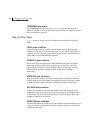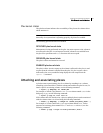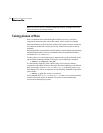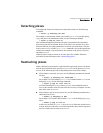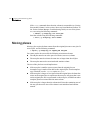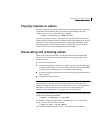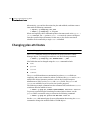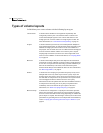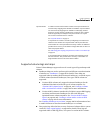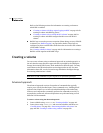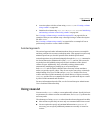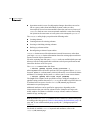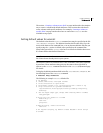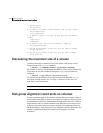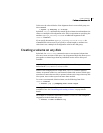
236 Creating volumes
Types of volume layouts
Types of volume layouts
VxVM allows you to create volumes with the following layout types:
Concatenated A volume whose subdisks are arranged both sequentially and
contiguously within a plex. Concatenation allows a volume to be
created from multiple regions of one or more disks if there is not
enough space for an entire volume on a single region of a disk. For
more information, see “Concatenation and spanning” on page 35.
Striped A volume with data spread evenly across multiple disks. Stripes are
equal-sized fragments that are allocated alternately and evenly to the
subdisks of a single plex. There must be at least two subdisks in a
striped plex, each of which must exist on a different disk. Throughput
increases with the number of disks across which a plex is striped.
Striping helps to balance I/O load in cases where high traffic areas
exist on certain subdisks. For more information, see “Striping (RAID-
0)” on page 38.
Mirrored A volume with multiple data plexes that duplicate the information
contained in a volume. Although a volume can have a single data plex,
at least two are required for true mirroring to provide redundancy of
data. For the redundancy to be useful, each of these data plexes
should contain disk space from different disks. For more information,
see “Mirroring (RAID-1)” on page 42.
RAID-5 A volume that uses striping to spread data and parity evenly across
multiple disks in an array. Each stripe contains a parity stripe unit
and data stripe units. Parity can be used to reconstruct data if one of
the disks fails. In comparison to the performance of striped volumes,
write throughput of RAID-5 volumes decreases since parity
information needs to be updated each time data is modified. However,
in comparison to mirroring, the use of parity to implement data
redundancy reduces the amount of space required. For more
information, see “RAID-5 (striping with parity)” on page 45.
Mirrored-stripe A volume that is configured as a striped plex and another plex that
mirrors the striped one. This requires at least two disks for striping
and one or more other disks for mirroring (depending on whether the
plex is simple or striped). The advantages of this layout are increased
performance by spreading data across multiple disks and redundancy
of data. “Striping plus mirroring (mirrored-stripe or RAID-0+1)” on
page 42.



